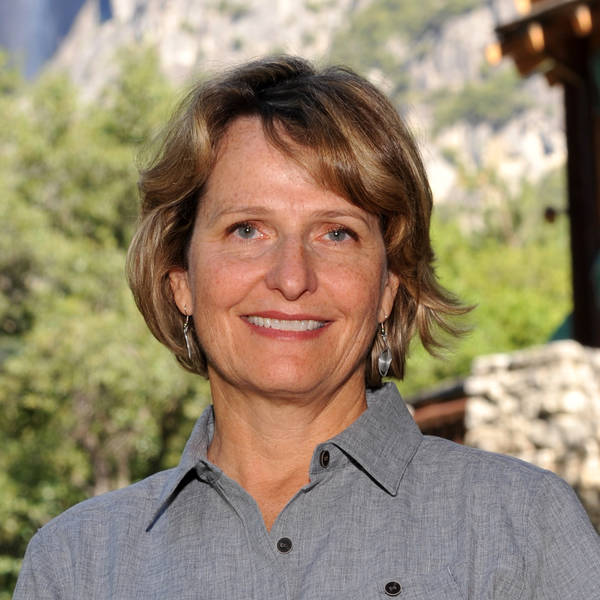After more than a decade of fighting to protect bears, wolves, and coyotes in Alaska, NPCA is proud to announce that new rules go into effect today banning objectionable hunting practices in the state's national preserves.
Three summers ago, I traveled to Denali, Katmai, and Lake Clark National Parks and Preserves in Alaska and saw bears and other wildlife in their natural habitat—in some cases from just yards away. Like many other travelers, I visit public lands like these to experience some of the last wild places where animals can roam freely in the landscape as they have for centuries. Staring out across a lakeshore to see a brown bear staring back at me is an experience like none other. It was truly an unforgettable trip.
Today’s victory feels all the more significant to me after the time I spent watching brown bears play and dig for clams. Because after more than a decade of work and thousands of heartfelt messages from advocates around the country to protect bears, wolves, and coyotes, rules officially go into effect banning egregious hunting practices in national preserves that can only be described as “UnBearable.”
To be clear, NPCA does not object to all hunting. People in Alaska have been hunting responsibly for centuries, and national preserves in Alaska have always allowed the practice, both for subsistence and for sport. What NPCA objects to are regulations that conflict with the National Park Service mission “to conserve the scenery and the natural and historic objects and the wild life … by such means as will leave them unimpaired for the enjoyment of future generations.”
Drawing the Line: Final National Park Service Proposal Aims to Protect Alaska’s Bears and Wolves
Statement by Joan Frankevich, Alaska Program Manager, National Parks Conservation Association.
See more ›However, in 1994, the Alaska Legislature instituted a new law that led to “predator control.” This management strategy encourages the killing of more bears and wolves so that greater numbers of moose and caribou survive for humans to hunt as food. Interfering with the balance of predator and prey animals in this way goes directly against Park Service management policies and goals to preserve nature in an unimpaired state.
And these predator control methods can hardly be compared to traditional hunting. These practices include baiting bears with grease-covered donuts, killing cubs and sows with cubs, and allowing hunters to go into bears’ dens and kill them while they hibernate. These are not sportsmanlike ways to hunt wildlife in our national preserves.
The Park Service has attempted for years to exempt its preserves from these Board of Game predator control methods. NPCA has documented more than 60 instances since 2001 in which the Board of Game ignored these Park Service requests. Last year, the Park Service drafted new policies to officially change its practices to clarify that these conflicting state regulations do not apply to national preserves. More than 30,000 NPCA members and advocates wrote letters of support to ban these egregious hunting practices in national preserves. Today, we finally see the fruition of more than ten years of work to protect these critical animals in some of America’s wildest lands.
The final Park Service regulations governing Alaska’s national preserves include provisions that NPCA and its advocates have fought to establish for years. Let’s be proud of these new rules that go into effect today:
- No use of bait (donuts, grease soaked bread, etc.) to hunt bears.
- No use of artificial light to spotlight dens to kill black bears.
- No killing bear cubs or sows with cubs.
- No killing wolves or coyotes (including pups) during the denning season.
- No use of dogs to hunt big game.
- No hunting big game that is swimming.
- No killing any wildlife to reduce the numbers of native species for the specific purpose of increasing the numbers of harvested species (i.e., predator control).
I am grateful to the National Park Service for enacting these strong protections. I am grateful that places like Denali and Katmai still allow visitors like me to experience the wonder of seeing bears, wolves, and coyotes up close. And I am grateful to NPCA’s advocates who have helped make these measures a reality so we can finally put an end to UnBearable hunting in our national preserves.
About the author
-
 Theresa Pierno President and CEO
Theresa Pierno President and CEOTheresa Pierno is President and CEO of the National Parks Conservation Association. She joined NPCA in 2004 after a distinguished career in public service and natural resource protection, and has helped to solidify the organization's role as the voice of America's national parks.
-
General
-
- Parks:
- Aniakchak National Monument & Preserve
- Bering Land Bridge National Preserve
- Denali National Park & Preserve
- Gates Of The Arctic National Park & Preserve
- Glacier Bay National Park & Preserve
- Katmai National Park & Preserve
- Lake Clark National Park & Preserve
- Wrangell St. Elias National Park & Preserve
- Yukon-Charley Rivers National Preserve
-
- NPCA Region:
- Alaska
-
-
Issues


